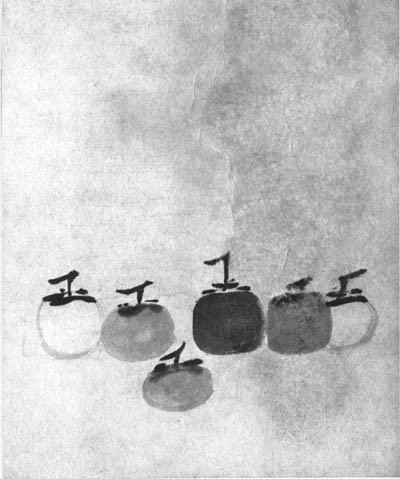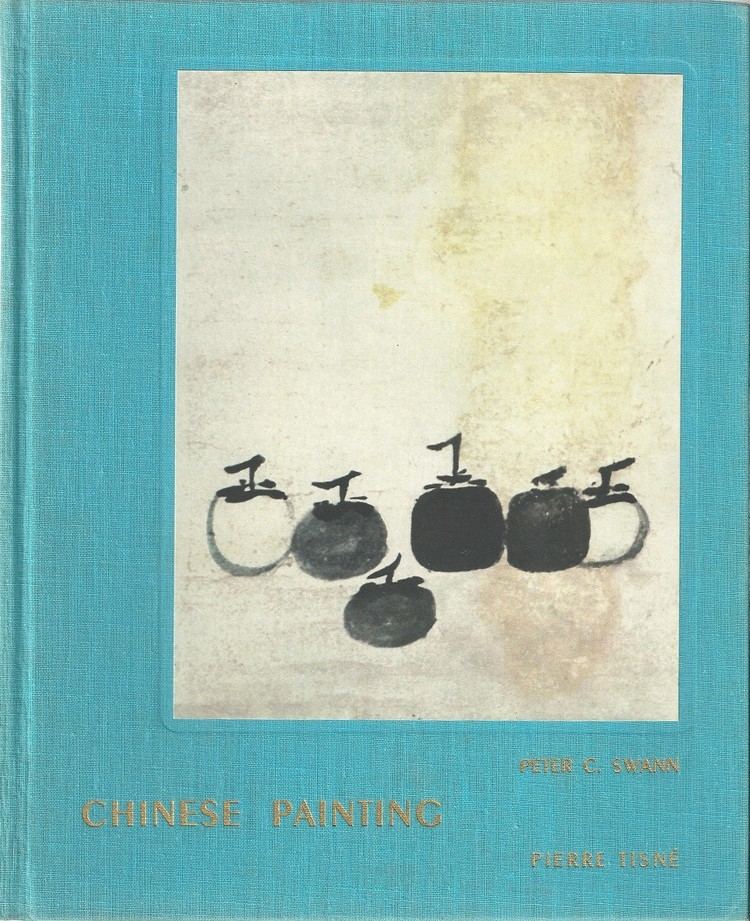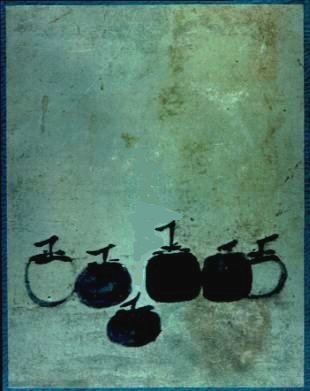Year 13th Century Artist Muqi Fachang | Type Ink on Paper | |
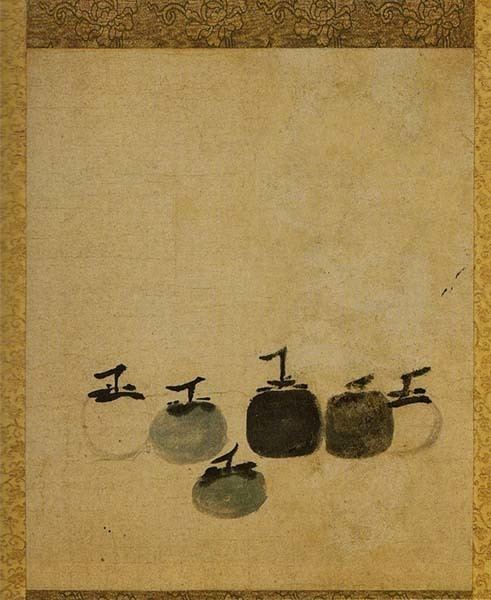 | ||
Dimensions 36.2 cm cm × 38.1 cm cm (14.25 in in × 15 in in) Similar The Rongxi Studio, Walking on a Mountain Path in S, Early Spring, A Table of Desserts, Poet on a Mountaintop | ||
12c six persimmons
Six Persimmons is a 13th-century Chinese painting by the monk, Muqi Fachang or Mu Ch'i Fa-Ch'ang. It was painted during the Song dynasty. Muqi was one of the two great exponents of the spontaneous mode of Chinese painting (the other being Liang Kai). It features six persimmons floating on an undefined, but skillfully mottled background. It is painted in blue-black ink on paper.
Contents
- 12c six persimmons
- Henry mimicing mu qi s six persimmons at chinese paintings from japanese collection at lacma
- References
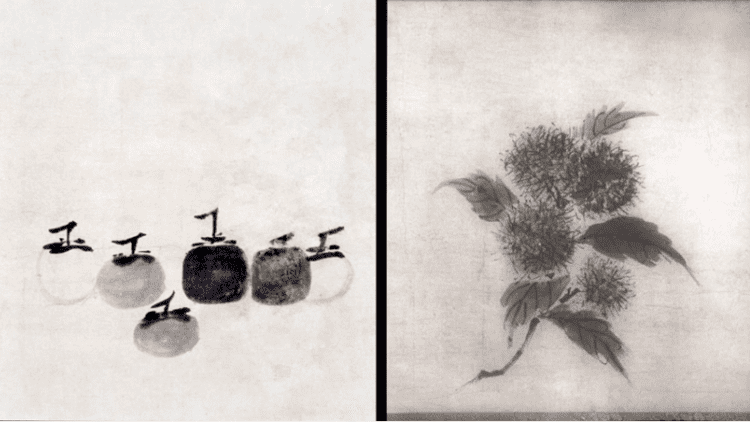
The painting became famous for the tremendous skill of the brushstrokes. Their subtlety of modeling is often remarked upon. The thick and thin brushstrokes that model the lightest of the persimmons make it seem to float in contrast to the dark one next to it. The treatment of the stems and leaves recall Chinese characters, and reveal brush control at its highest level. Professor James Cahill of University of California Berkeley devoted an entire lecture to it, available online.
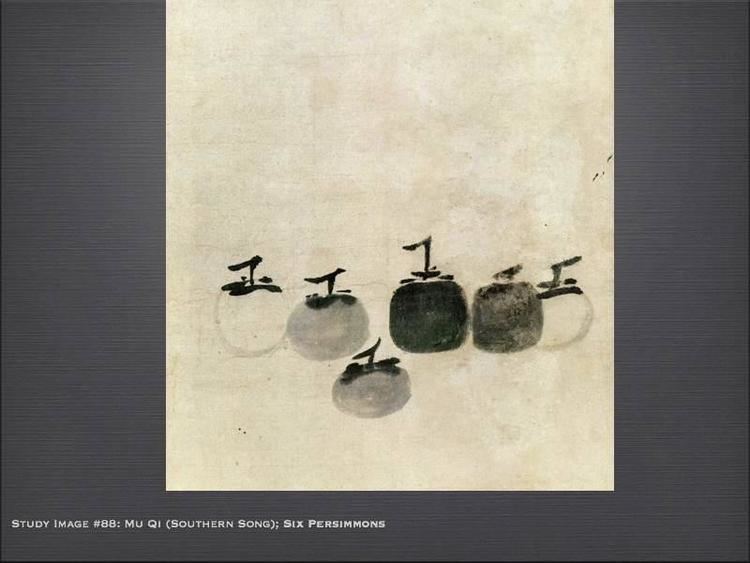
(Six Persimmons is) passion... congealed into a stupendous calm.
It currently resides in the Juko'in subtemple of Daitoku-ji in Kyoto, Japan. It is seldom displayed to the public.
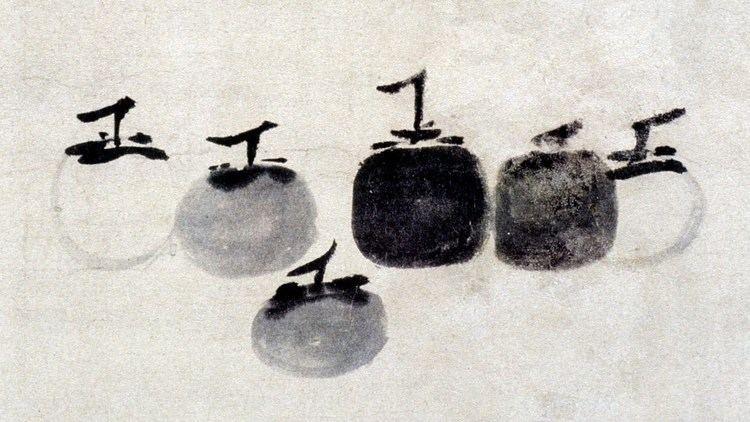
Henry mimicing mu qi s six persimmons at chinese paintings from japanese collection at lacma
